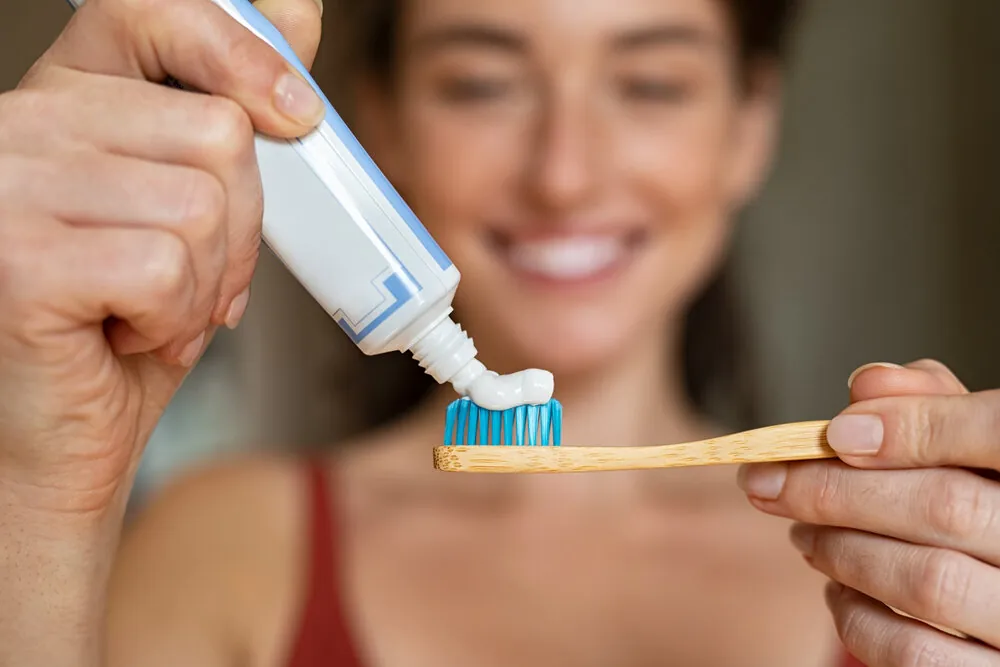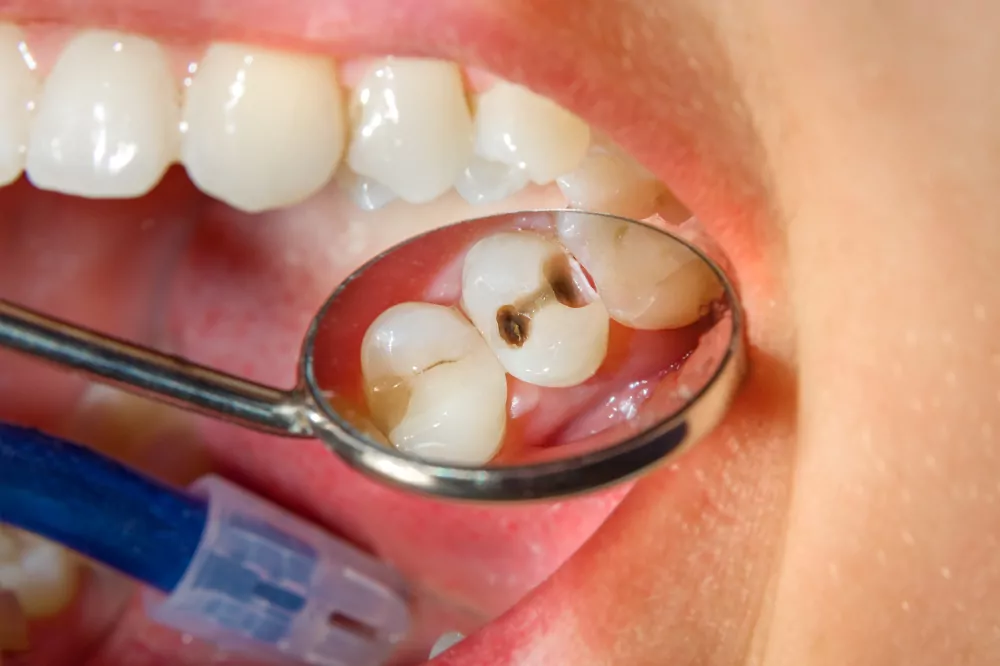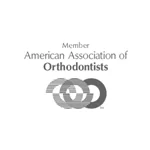
If you find yourself here, chances are that somebody you know (possibly somebody who’s very “anti-fluoride” has told you about the re-mineralizing benefits of hydroxyapatite (HA for short).
Perhaps you came across it by happenstance on a toothpaste or mouthwash you bought and wondered “What the heck is that?!”
Regardless, if this funky-sounding naturally occurring chemical has you dazed and confused, fear not, because we’re about to dive deep into:
- What hydroxyapatite is
- What it does for your tooth enamel
- Different types of hydroxyapatite
- Whether this oral care ingredient is a hero or villain when it comes to maintaining a healthy mouth and teeth
Ready? We’re super excited to share the following info with you!…
Hydroxyapatite: A Natural Approach to Remineralization
You know that ‘80s song “She Blinded Me With Science”? Yeah…we’re not trying to do that to you! Although hydroxyapatite sounds all scientific, kind of like a crazy artificial ingredient you might find in processed food, it’s not.
In fact, hydroxyapatite [chemical makeup Ca5(PO4)3OH] is a compound that is naturally found in your teeth and bones (but it can be synthetically created).
As the American Chemical Society notes, HA is “present in as much as 70 wt% of human bone.”
It’s not a new dental ingredient either; MedicalNewsToday adds “Since the 1970s, doctors have used HA-based substances clinically in bone and dental repair procedures.”
Here’s why it matters: When it comes to both a) preventing cavities and b) reducing sensitivity of teeth, restoring tooth enamel is of critical importance. And thankfully, because hydroxyapatite is the main component of enamel, it’s incredibly effective at re-mineralizing teeth, which in turn leads to stronger teeth that are more resistant to cavity-causing foods and drinks. It may also help reverse small cavities.
Hydroxyapatite vs. Fluoride: Weighing Risks vs. Benefits
“Wait!, you might be thinking… Doesn’t fluoride do all that?
The answer is yes!
Why: This is because fluoride plays a vital role in the remineralization process of teeth. Just about every time we eat or drink, the pH in saliva drops, creating an acidic environment. When the pH lowers to around 5.5, it leads to demineralization. This is where the natural hydroxyapatite, the calcium phosphate that predominantly makes up tooth enamel, begins to dissolve.
How: Fluoride steps in during this critical phase by forming fluorapatite, a mineral more resistant to acid, which is then redeposited into the enamel as the pH normalizes. This action fortifies the teeth, making them stronger and more resistant to cavity formation.
By aiding in the formation of fluorapatite, fluoride directly combats the enamel’s vulnerability to acidic conditions, enhancing its resistance to these attacks.
Fluoride vs Hydroxyapatite Concerns: The issue between fluoride vs. hydroxyapatite is often characterized as one of danger and inefficacy, with detractors of the former saying it’s toxic and bad for you and detractors of the latter saying it’s not proven to be effective.
The truth? It’s somewhere in the middle. At The Super Dentists, we advocate for taking a benefit vs. risk-based approach to using hydroxyapatite vs. fluoride products.
The truth is:
- Fluoride can (and often should) be used for children over a certain age and adults who are at high risk of cavities or have had lots of cavities in the past 1-2 years.
- Hydroxyapatite alone can be used by younger children who have not yet learned safe swallowing skills and therefore might be more prone to fluoride poisoning but still require a natural form of cavity prevention.
- Hydroxyapatite and fluoride products can be safely used by individuals who can safely use fluoride to maximize remineralization, cavity prevention, and sensitivity prevention benefits.
Micro vs. Nano Hydroxyapatite: Understanding the Difference
Though micro hydroxyapatite has been used since the ‘70s, nano hydroxyapatite was introduced a decade or so later and is useful because its smaller particles more easily bind to tooth enamel, making it much more effective. (And it’s not just us saying that, hydroxyapatite is proven to be both safe and effective).
The takeaway? When looking for safe and effective oral care products with hydroxyapatite, look for those with nano-hydroxyapatite specifically.
Or, shop SuperMouth products with Hydroxamin® ─ “a proprietary blend of hydroxyapatite, including its nano-form which closely mimics the structure of natural enamel, Vitamin D3, and Vitamin K2, each at their ideal concentrations for maximum efficacy.”
Learn More About Hydroxyapatite & Oral Care Best Practices
Remineralizing teeth to prevent sensitivity and cavities is important. But remember, it’s also just one part of establishing a healthy oral care routine!
Check out SuperMouth’s blog post “Ensuring Maximum Effectiveness of Your Oral Care Products” to explore the other important considerations to keep in mind when shopping for effective and healthy mouthcare products!
Shop SuperMouth Products with Hydroxamin®
Ready to start your journey to better oral health? Shop SuperMouth oral care products now.
Dental care is highly individualized, so depending on you and your child’s age and stage of life, you may be better off with either Hydroxamin®-only products or Hydroxamin® and Flouride products.
Not sure which is the case? Contact us at The Super Dentists today and we’d be more than happy to help you out!










